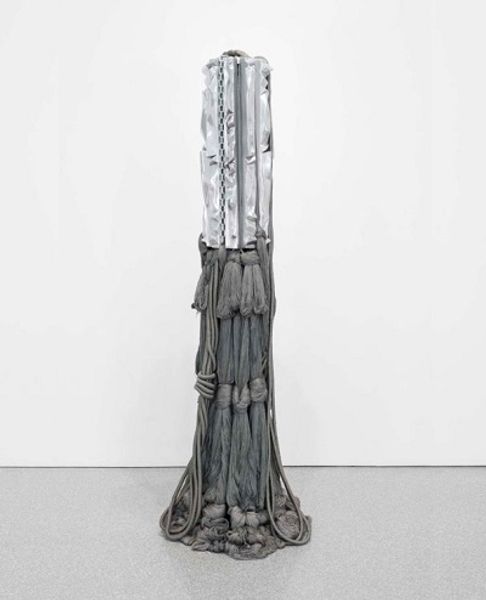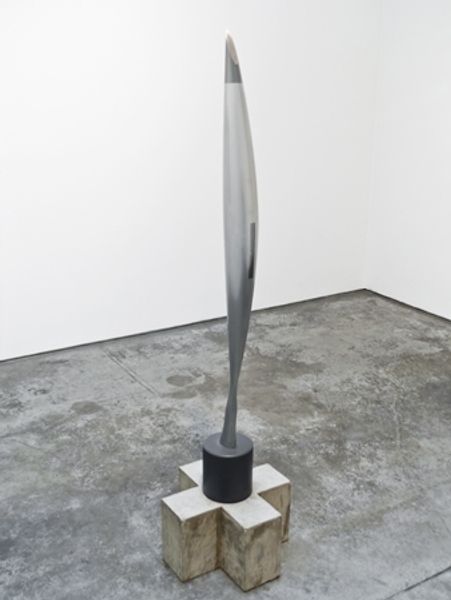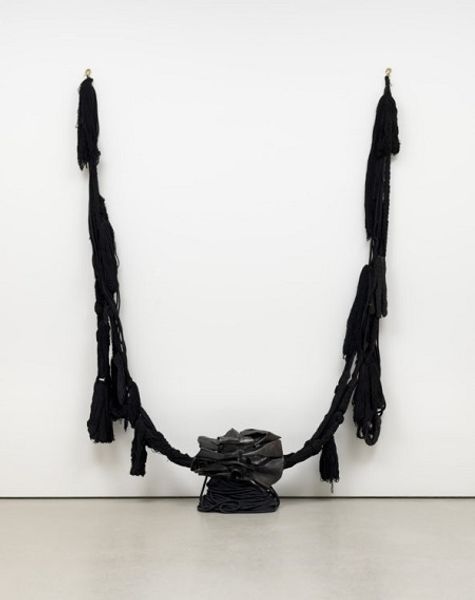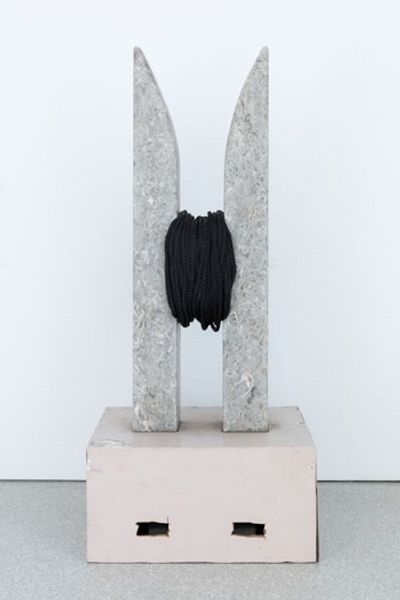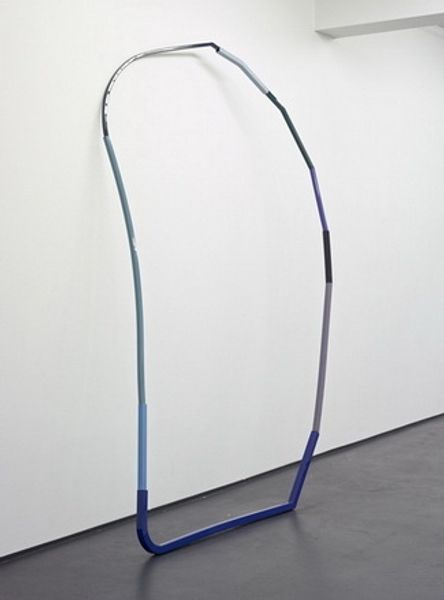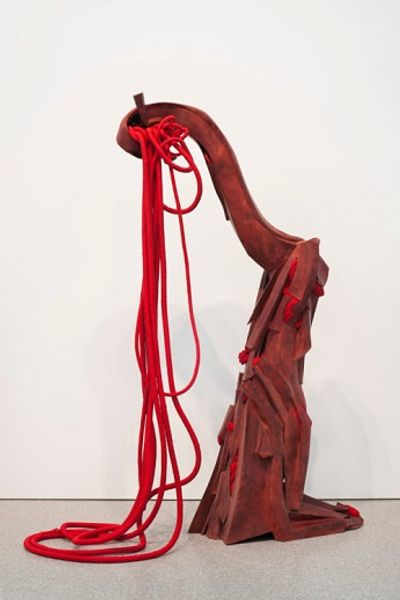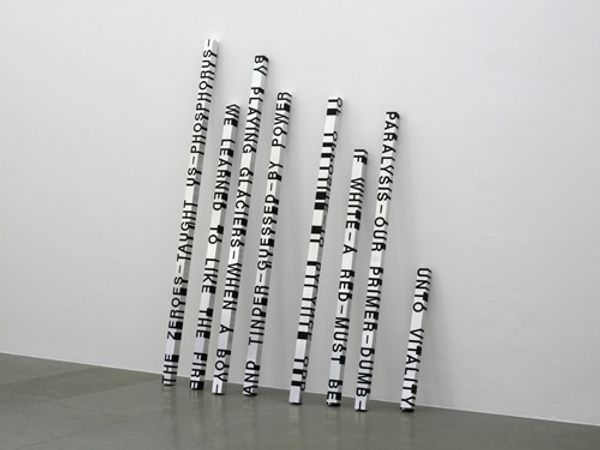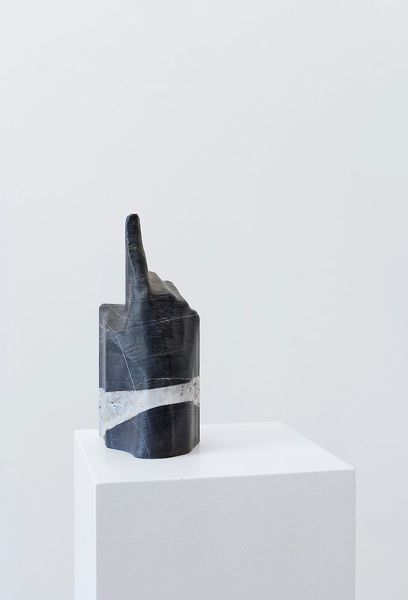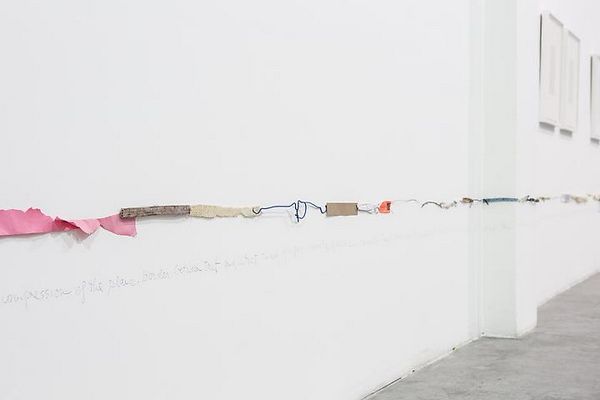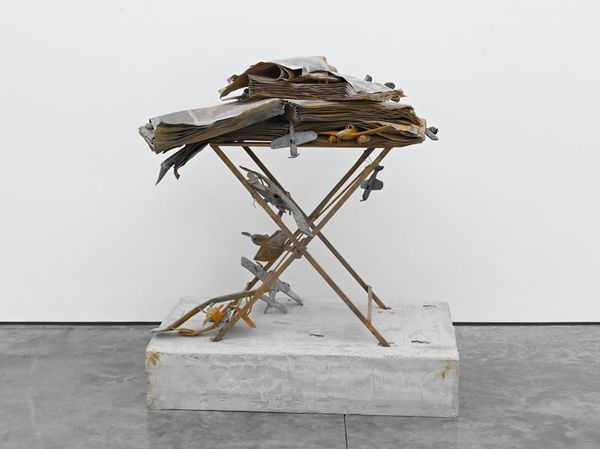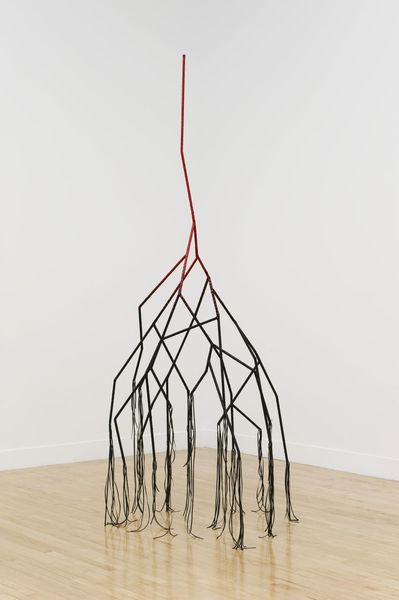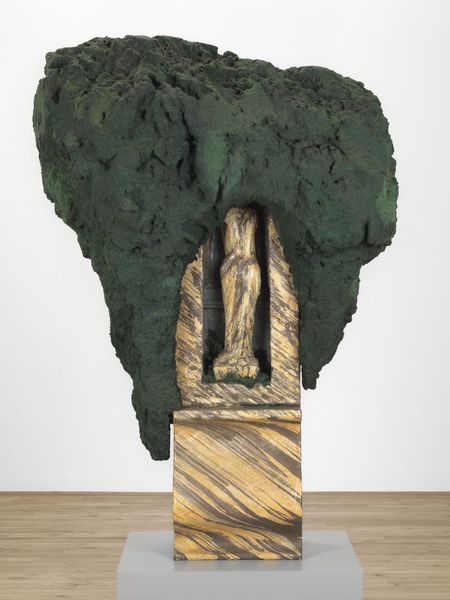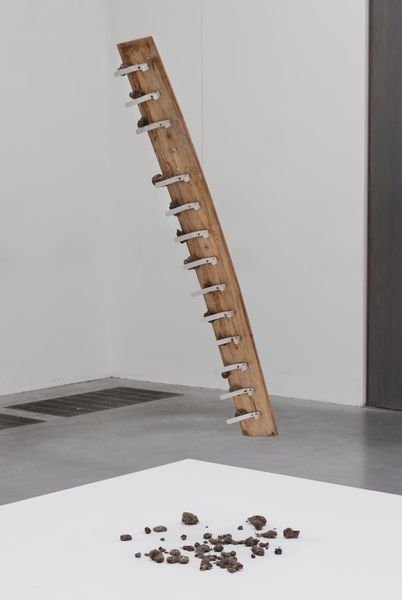
#
neo-dada
#
black-mountain-college
Copyright: © 2019 Robert Rauschenberg Foundation. All right reserved.
Curator: Here we have Robert Rauschenberg's "The Interloper Tries His Disguises (Kabal American Zephyr)," a combine from 1982. What’s your first impression? Editor: The tire… it dominates. It feels simultaneously aggressive and defeated. Like a serpent, maybe, trying to slither up the wall, but failing miserably. Curator: The tire certainly grabs your attention. Rauschenberg's "combines," as he called them, were groundbreaking. This piece layers readymade objects—the tire, a small wheel, and photographs—to create a dynamic conversation between painting and sculpture. Editor: It definitely feels like a statement on materiality. The grimy tire juxtaposed with those hazy, almost dreamlike photographs… it's a powerful contrast. What's the significance of the repeated imagery in the photograph collages? Are there specific cultural references there? Curator: Yes, absolutely. Repetition is key in Rauschenberg’s work. Here, the tiled photographs create a sort of fragmented cultural landscape. Each image, even the seemingly mundane, carries a specific weight within American identity. The repeated figures perhaps reference archetypes or collective memories. Note how some are partially obscured, layered and fading, as if to indicate their instability. Editor: Instability is a good word. Thinking about the "Interloper" in the title, is this Rauschenberg suggesting that American identity itself is constantly being reshaped, disguised by external forces like industrialization and consumerism, which is ironically displayed by the discarded car parts? Curator: That’s a compelling reading. The "disguises" could be these very layers of mass-produced objects, masking deeper truths. The wheel also introduces a circularity, a sense of history repeating itself, with progress ironically stalled by its own waste. Editor: And the tire, inherently linked to movement and progress, is rendered immobile, even decaying. The use of readymades speaks to the inherent symbolism imbued in the things we cast aside. Curator: Exactly. It reminds us that even in discarded objects, symbols persist, shaped by collective memory and continued reinterpretation. Editor: Looking at this, I’m struck by how it foreshadows contemporary concerns about environmentalism and cultural decay. It’s a layered and deeply relevant piece. Curator: It certainly invites us to consider how our identities and narratives are constructed through the objects that surround us, objects whose own identities have become fraught and loaded.
Comments
No comments
Be the first to comment and join the conversation on the ultimate creative platform.
